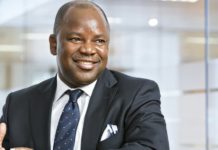
[miningmx.com] — NEW generation miner, Wesizwe Platinum, took a major step forward last week with the release ahead of schedule of its independent engineers’ techno-economic report and announcement that it’s proceeding with a pre-feasibility study.
Wesizwe is now in effect a year ahead of its original schedule, which CEO Michael Solomon attributes to what he calls its unique reverse-engineering policy.
Where the other 30-odd junior platinum miners picked geographical areas and went out to search the field, Wesizwe first determined the parameters it sought, and promptly discarded any prospects that fell short.
The requirements were a standalone deposit that could be mined at a rate of 180,000 to 240,000 tons/month with a minimum life of 15-20 years, with an internal rate of return of 16%-20%, containing a resource bank of at least 47 million tons, equivalent to 6.7 million oz platinum group metals at a grade of at least 4.5 g/t.
It sounds demanding, but the upgrade puts the Frisch resource at 74 million tons, containing 11.89 million oz, of which 7.27 million (some of the rights are jointly owned) is attributable to Wesizwe, with a grade averaging about 5 g/t across the UG2 and Merensky reefs.
The two reefs are close together, which makes mining easier, and contrary to some analysts’ fears are not disrupted by the closeness to the Pilanesberg.
They are in effect an extension of the Styldrift joint venture of Anglo Platinum and its Bafokeng Rasimone Platinum Mines (BRPM).
Most other junior miners have resources predominantly on only one or the other of the two reefs.
The “basket” of platinum group metals also contains an above-average rhodium content, a favourable feature given the current high price of that metal.
Solomon says the capital structure is also unique. The closest comparison is Impala, but at Wesizwe the Bakubung tribe exchanged the mineral rights directly for a 33% stake of the equity; rather than take a royalty.
With other PDIs holding another 19%, the company is fully empowered.
Perhaps because of this, Wesizwe also has strong ides about its corporate social investment programme, believing that this must be treated as development aid focused entirely on creating non-mining sustainable development in the area around the mine.
And Wesizwe also raised an initial R115m in private equity, so that by the time it came to list on the JSE it already had concrete results to show.
In retrospect, though, it was a mistake to let the market set the price when the share was listed last December.
Rare grasp of both tribal and corporate issues
The bid price crept up with no sellers until 2,000 were offered at 600c/share, which Solomon admits was an absurd, indeed embarrassing, valuation.
The share fell all the way back to 200c before recovering to about 265c, which Solomon feels is not unreasonable as the company moves up the value curve towards confirming the existence of a bankable asset.
The original schedule was for the bankable feasibility study to be completed at the end of 2008. That stage should now be reached in December 2007.
However, bringing Frisch to production by no means exhausts Wesizwe’s ambitions. In the 1990s, Solomon helped the ANC formulate its mining policy, while he later as a technical adviser resolved the seven-year dispute between Anglo Platinum and the Royal Bafokeng.
So he has a rare grasp of both tribal and corporate issues, and believes Wesizwe’s structure will allow it to play a major role in the consolidation of the fragmented junior platinum mining sector.
In the first place, it can offer JSE-listed paper to BEE partners in joint ventures, securitising their investment, or to enhance the BEE credentials of the other juniors – which all need it.
And Solomon believes large-scale consolidation of the junior platinum mining industry is essential.
‘Raise money as we need it’
With Royal Bank of Canada estimating Wesizwe’s market cap as equivalent to about $15 per ounce of resource, against single-digit valuations for most juniors, Wesizwe is well placed to take a lead in this process.
More directly, it would make sense to take out the minority stakes in the Frisch project, while despite corporate rivalries there is great scope for rationalisation of prospective areas contiguous to its existing lease.
In September Wesizwe raise R65m by issuing 31 million shares. This was a poorer response than the market had expected, but Solomon is happy.
“It’s enough to take us to the next phase. Our philosophy is to raise money as we need it, not go for a huge issue and sit on a cash pile.”
Apart from the flurry at the listing, which Solomon admits took some living down, the Wesizwe formula seems to have worked pretty well.
The share price didn’t react to Wednesday’s announcement, which suggests that the market believes Wesizwe’s schedule is deliberately conservative.
That means the company will have to continue beating its targets, but on past form that should be attainable.
Michael Coulson is a columnist for fin24











